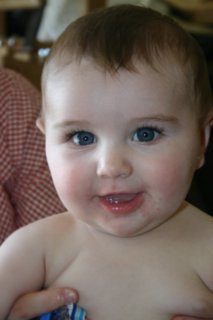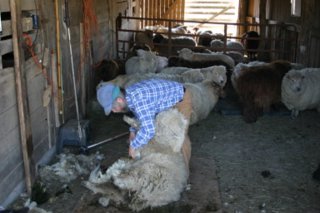1. on the beach in Aruba
2. on a small boat in the Alaskan Inside Passage
3. in the pasture with my small flock of hand spinner's sheep
4. at the top of a monastery bell tower in Yaroslavl, Russia
5. in an airplane flying from Moscow to Syktyvkar, Komi Republic, Siberia, Russia
6. overlooking the Pacific Coast at the California Albion River Inn w/a blazing fire in the fireplace
For the sheer tranquility, the best place to knit was (is) either in the pasture with my sheep or at the Albion River Inn; both places were, and are, sublime. The Albion River Inn is the setting for the old Marsha Mason & Alan Alda movie Same Time Next Year and the Inn has only improved with age. Not only that but it's just a few miles down the road from the Mendocino Yarn Shop, in the five nicest shops I've ever visited, if not actually being number one.
For me to buy yarn is like carrying coals to Newcastle but every time I hit the road, you'll find me, figuratively , if not literally, carrying my bucket in search of yarn shops. Fiber folks are some of the nicest I've ever know and yarn shop owners are either the nicest or the worst people I've ever met. Some yarn shop owners make it an extreme pleasure to spend money in their shop...witness by the amount of credit card charges as I exit. Other shop owners act as if allowing people to spend money in their shop is a blessing.
I call it a curse. I travel a lot both for work and for pleasure and have a list of yarn shops on the A list and on the no list. In this day and age of internet, yarn shop owners would do well to hire someone with a pleasing, if not perky, personality to service the clientele. It's all too easy to hit the brick wall of an owner's shared bad day and walk out leaving a lot of cash, iow merchandise, lying next to the cash register, funds still in one's pocket. I know, I've done it.
All in all, yarn shops are delightful places to visit with wonderful, sometimes even natural, lighting, shared enthusiasm of personnel and clientele, yarn, books and inspiration galore and, almost, more opportunities to spend money than rice in China.
If you travel but haven't heard of the Knitters', Crocheters', Weavers' and Spinners' Travel Guide 2006 ask your local yarn shop to get in an order. Direction Press is the publisher, 888.737.0847, and this book is a gem. No, of course, it's not totally inclusive but it's an excellent first offering. It's a guide to local yarn and farm shops across the USA. At the beginning of every alphabetically arranged chapter, there's a state map with towns and numbers of yarn shops in that town or area. The numbers correspond to the shops and makes it easier to local shops in locales where you'll travel.
All of that leads up to my five favorite yarn shops, arranged in no particular order. Let me know if you've visited any of my favorites and then let me know your favorites.
1. Mendocino Yarn Shop, CA - breathtaking locale, excellent selections, wonderful staff
2. Yarntiques, Johnson City, TN - full to overflowing sensory load - aaaahhhhhhh!
3. Holly Springs Home Spun, Powhatan, VA - everything from "sheep to shawl"
4. Greenberry House, Meadows of Dan, VA - Angora, Queen of Fibers
5. The Blue Ewe @ Thistle Cove Farm - Artisan Yarn from the Shepherd
So, okay. Those last two aren't as well stocked as a "regular" yarn shop but it's not the shop that's so dang wonderful...it's the fiber . Leslie, over at Greenberry House, has some of the nicest, if not the nicest, angora fiber I've ever spun. Her rabbits' fiber show the lack of stress, good food, water and all around excellent care they receive at the hands of "Best Buns in the Blue Ridge" (ya gotta LOVE that name!)
 My small hand spinner's flock grow some of the most excellent fleeces I've ever put my hands in and it spins into the most luscious yarn whether hand or farm spun. The natural colored yarns are a blend of Romney and Shetland fleeces in a worsted weight, two ply, knit on size 7 needles.
My small hand spinner's flock grow some of the most excellent fleeces I've ever put my hands in and it spins into the most luscious yarn whether hand or farm spun. The natural colored yarns are a blend of Romney and Shetland fleeces in a worsted weight, two ply, knit on size 7 needles.You get to buy direct from the Appalachian Wool Works Shepherd and help keep the old ways alive...how good is that!?
My list of favorite shops grows with every trip and those good Directions Press folks are enablers, one and all. They make it so very easy to find yarn and fiber shops and thus to spend money. If you have a favorite shop and it's not listed in their book, contact them ASAP and let them know. Don't keep secrets like wonderful yarn shops...you run the risk of breaking a needle mid-project.




